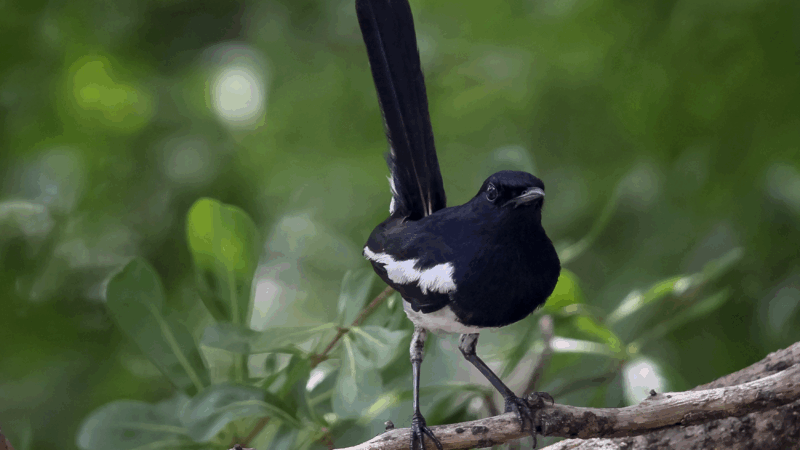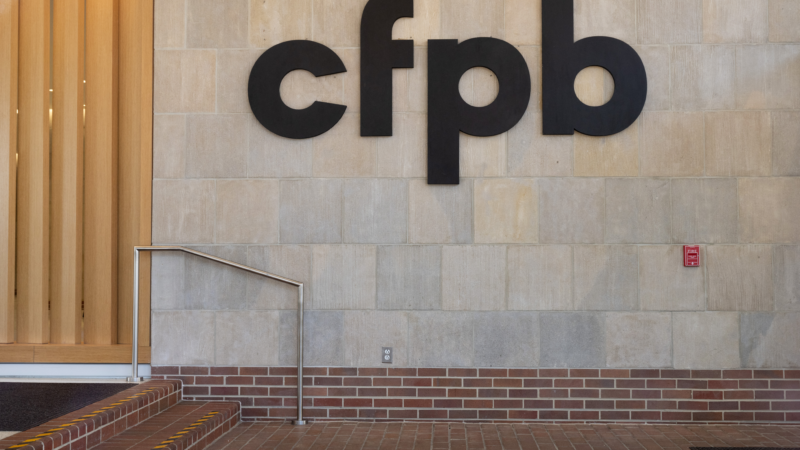A new study knocks down a popular hypothesis about why birds sing at dawn
Researchers have some new evidence about what makes birds make so much noise early in the morning, and it’s not for some of the reasons they previously thought.
For decades, a dominant theory about why birds sing at dawn — called the “dawn chorus” — has been that they can be heard farther and more clearly at that time.
Sound travels faster in humid air and it’s more humid early in the morning. It’s less windy, too, which is thought to lessen any distortion of their vocalizations.
But scientists from the Cornell Lab of Ornithology’s K. Lisa Yang Center for Conservation Bioacoustics and Project Dhvani in India combed through audio recordings of birds in the rainforest. They say they didn’t find evidence to back up this “acoustic transmission hypothesis.”
It was among the hypotheses involving environmental factors. Another is that birds spend their time singing at dawn because there’s low light and it’s a bad time to look for food.
“We basically didn’t find much support for some of these environmental cues which have been purported in literature as hypotheses” for why birds sing more at dawn, says Vijay Ramesh, a postdoctoral research associate at Cornell and the study’s lead author.
The study, called “Why is the early bird early? An evaluation of hypotheses for avian dawn-biased vocal activity,” was published this month in the peer-reviewed journal Philosophical Transactions of the Royal Society B.
The researchers didn’t definitively point to one reason for why the dawn chorus is happening, but they found support for ideas that the early morning racket relates to birds marking their territory after being inactive at night, and communicating about finding food.
They analyzed audio recordings from the rainforest

The team analyzed recordings from audio recorders placed at 43 locations in the Western Ghats mountain range in southern India, which is known as a biodiversity hotspot. They examined sounds of what they determined were 69 different species of birds. They studied recordings from the hours around dawn and the hours around dusk to compare activity.
Unsurprisingly to anyone who’s been woken up by a cacophony of bird calls, the “vast majority” of species they studied had “significantly higher” vocal activity at dawn compared to dusk.
In order to evaluate the acoustic transmission hypothesis, they first had to make a prediction: that birds that vocalize at higher frequencies would be more active at dawn than at dusk. They predicted this because they said higher frequencies are more susceptible to degradation due to environmental factors, such as wind and humidity.
But they write that they found “no significant relationship between the peak frequency of vocalizations” and a type of bird’s preference for making noise at dawn instead of dusk.
And when the researchers looked into another “environmental” factor — that birds sing in the low light of dawn because that low light makes a bad time to forage — it would make sense that the same would be true at dusk. But most birds were far more vocal at dawn.
“I think that that’s probably the most significant finding here, is not to demonstrate what the dawn chorus is about definitively, but to rule out this class of hypotheses, this environmental open window set of hypotheses,” says Steve Nowicki, a professor of biology at Duke University who has studied birdsong and was not involved in the study.
What they found involves birds marking their territory and going on “hunting parties”

The relationships they did spotlight were that birds that were more territorial, and those with an omnivorous diet, were more vocal at dawn rather than dusk.
Birds that are highly territorial “tend to make advertisements early in the morning to sort of like claim territories or advertise where they are” after a night of inactivity, Ramesh says.
And when it comes to food, birds are engaging in “a lot of communication about where resources are, or often if there is a predator nearby,” he says. They speculate that a reason that omnivorous birds have a “marginally higher” level of vocal activity at dawn is because they often participate in flock “hunting parties” that more often happen at dawn. But as to why those hunting parties happen at dawn to begin with, they aren’t sure.
As the researchers note, there are plenty of caveats. They only studied birds in one particular tropical region in India (Ramesh says there’s “pretty much no overlap” with bird species we see in the U.S.). They didn’t observe the birds visually, and didn’t record exactly when dawn and dusk started, they just used approximate times.
Plenty of hypotheses exist for the dawn chorus. Nowicki says the researchers here didn’t examine some others, including that birds sing in the morning to warm up, “like a performer doing vocal warmups,” or that it’s related to females mating in the early morning.
In the paper, the scientists noted opportunities for future research using more sophisticated audio equipment and climate monitoring.
“Sometimes there are phenomena, like the dawn chorus could be one, where there’s not a single causal reason. And that’s kind of frustrating to scientists,” Nowicki adds.
There could be “different reasons that species are more likely to sing at dawn or not,” he says. “In some ways that’s an unsatisfying answer because it’s not buttoning things up.”
Trump administration says it’s freezing child care funds to Minnesota
President Trump's administration announced that it's freezing child care funds to Minnesota after a series of fraud schemes in recent years.
Flu cases are surging and rates will likely get worse, new CDC data shows
Flu season is off to a rough start this year, according to new CDC data. The virus is spreading faster than in previous years and the surge is likely to get worse. Here's what you need to know.
10 passion projects that stood out at the movies this year
NPR critic Bob Mondello narrows down his favorite movies of the year — the ones that made audiences vibrate.
Judge orders Trump administration to continue to seek funding for the CFPB
The order is the latest in a complex legal battle over the fate of the Consumer Financial Protection Bureau, a watchdog agency.
In a year of steep challenges, there were still shining moments in global health
The Trump administration's deep cuts in U.S. foreign health aid had a devastating impact. Yet there were achievements of note in spite of it all.
An escalation in Yemen threatens to reignite civil war and widen tensions in the Gulf
Saudi Arabia bombed Yemen's port city of Mukalla, targeting a shipment of weapons from the United Arab Emirates for separatist forces. The UAE later said it would withdraw its forces from Yemen.








